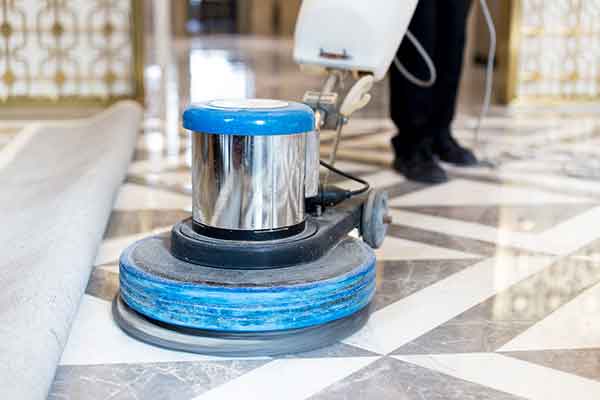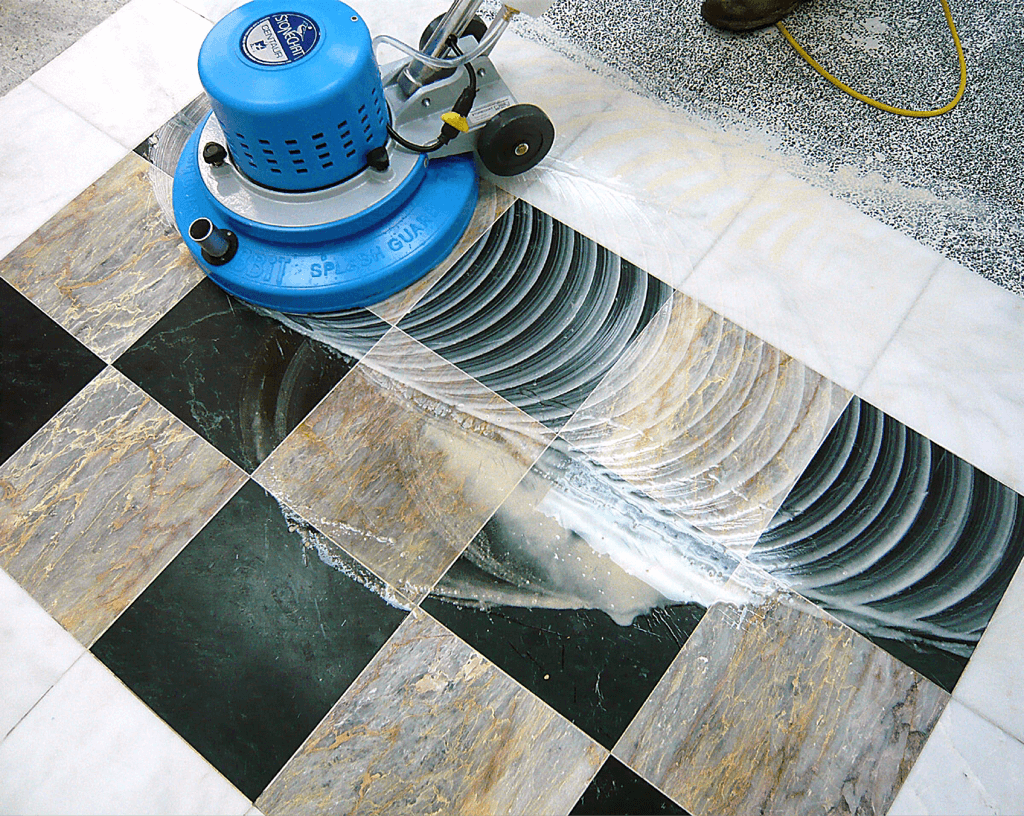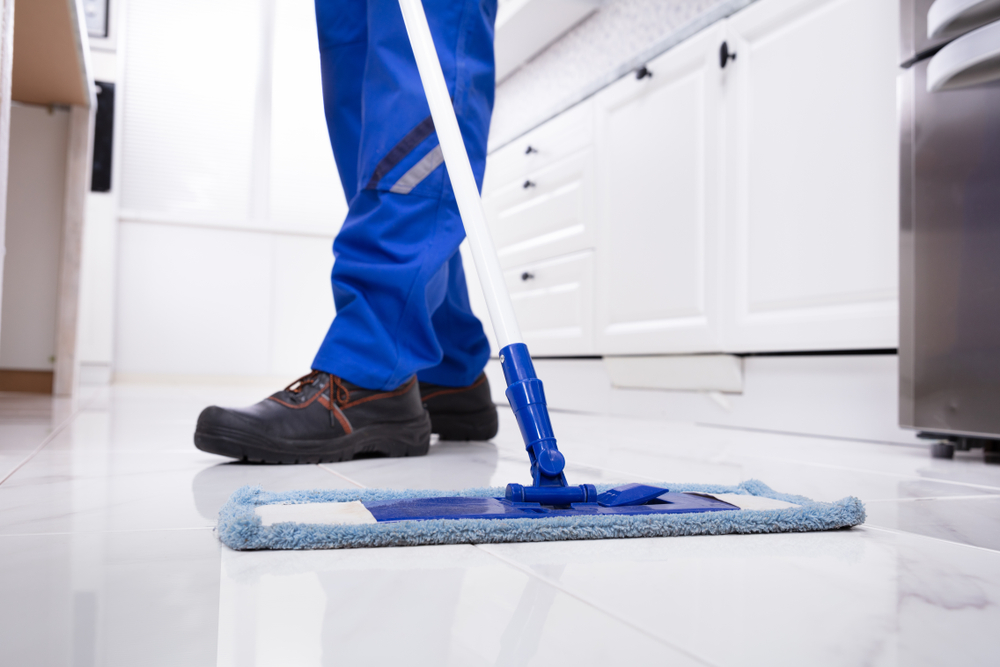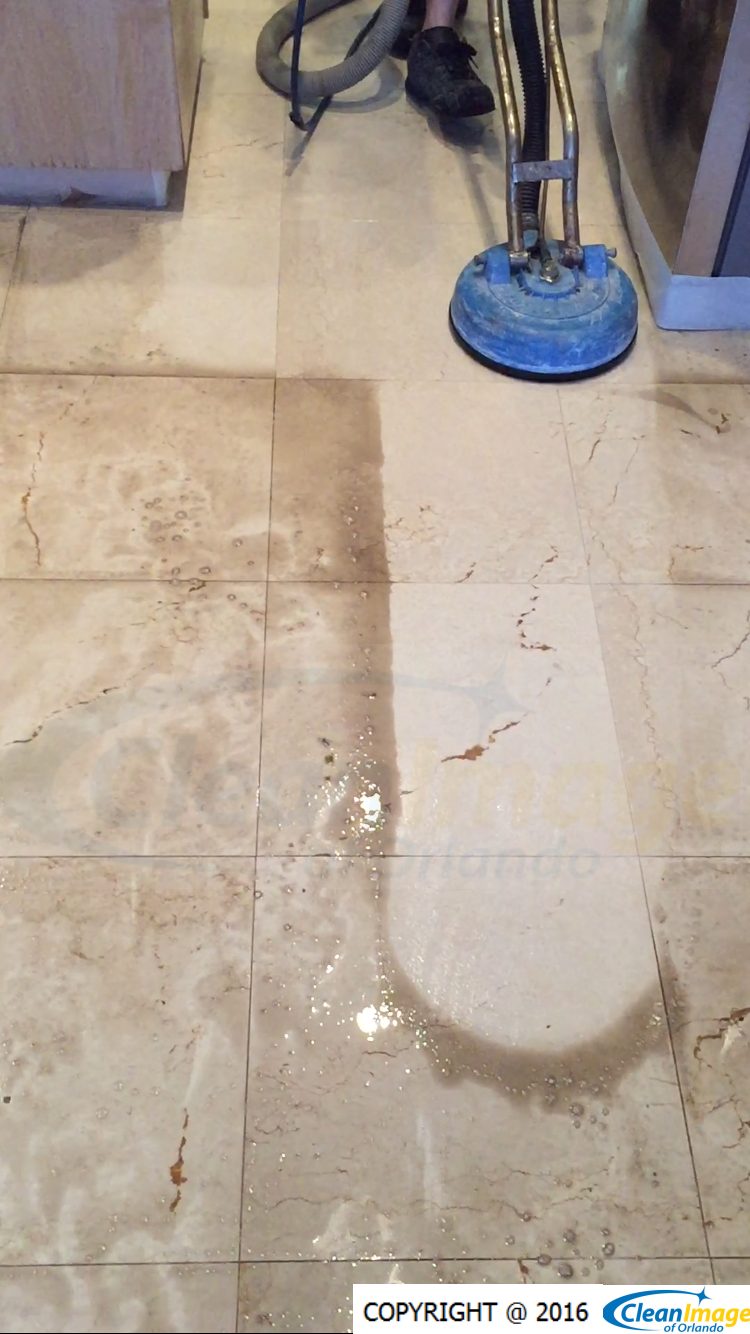Comprehensive Guide to Marble Floor Cleaning
Marble floors are a timeless and luxurious addition to any home, offering beauty and elegance that few materials can rival. However, marble is a porous and delicate stone, which means that it requires special care to maintain its luster and integrity over time. If you’ve invested in marble flooring, it’s essential to know the right cleaning methods to keep it in pristine condition while avoiding damage. Cleaning marble floors isn’t difficult, but it does demand a bit more attention and the right products. Today I will guide you through everything you need to know about marble floor cleaning, from basic upkeep to deep cleaning, and even address the common mistakes that could cost you. By the end of this guide, you’ll have all the knowledge you need to preserve the beauty of your marble floors for years to come.
The Nature of Marble
Marble is a natural stone formed from limestone, undergoing intense heat and pressure beneath the Earth’s surface. This process transforms the rock into a more durable, veined material. Despite its strength, marble is also a porous stone, meaning it absorbs liquids and stains if not properly cared for. One of the first things to understand when cleaning marble is that it is reactive to acidic substances. Even small amounts of lemon juice, vinegar, or soda can cause etching, which is a dull spot or mark on the surface of the stone. This vulnerability is what makes marble different from other types of stone or tile flooring and why cleaning it requires more care.
In addition to being porous, marble is also prone to scratching. Small grains of dirt or grit that are dragged across its surface can leave fine scratches that dull its shine over time. This is why regular sweeping and mopping are so important to keeping marble looking its best. With proper sealing, many of these vulnerabilities can be minimized, but even sealed marble requires gentle cleaning products and methods. Understanding the nature of marble will help you approach its care with the right level of attention and care.
One more thing to keep in mind is that not all marble is created equal. The quality and type of marble you have can affect how it reacts to different cleaning methods. Some types of marble are softer and more prone to scratching, while others may be denser and more resistant. Always check the manufacturer’s recommendations for your specific marble, as some may require specialized care. While general cleaning principles apply across the board, knowing the particular characteristics of your marble will help you avoid mistakes.
The aesthetic appeal of marble is also in its finish. Polished marble has a glossy surface that reflects light, making it more prone to showing scratches and etching. Honed marble, on the other hand, has a matte finish, which hides imperfections but can be more susceptible to staining. Understanding your floor’s finish will inform how you clean and maintain it. Whether polished or honed, the cleaning process differs slightly in terms of the tools and products used.
Last, because marble is a natural product, it may have imperfections or veining that are part of its inherent character. These should not be seen as flaws but rather as part of the stone’s beauty. However, improper cleaning methods can exacerbate these imperfections. By understanding the stone’s characteristics and treating it with care, you can enhance its natural beauty while prolonging its lifespan.

Daily and Regular Maintenance
Maintaining marble floors daily is one of the best ways to ensure their longevity. Regular maintenance prevents dirt and debris from accumulating, which can lead to scratches and stains. A soft broom or microfiber dust mop should be used daily to remove loose dirt and grit. Never use a rough or stiff-bristled broom as it could scratch the surface of the marble. Even tiny particles of dust can cause micro-scratches that build up over time and dull the floor’s shine, so it’s essential to keep the floor as dirt-free as possible.
Mopping should also be part of your routine, but water alone isn’t enough to clean marble properly. Use a pH-neutral cleaner specifically designed for marble or stone surfaces. These cleaners are gentle and won’t harm the marble’s surface. Avoid acidic or alkaline cleaners, as these can etch or damage the stone. When mopping, use a damp mop—never soaking wet. Too much water can seep into the marble’s pores and cause discoloration. After mopping, it’s a good idea to dry the floor with a clean towel or dry mop to prevent water spots.
In high-traffic areas, such as kitchens or entryways, you may need to clean more frequently than in rooms that are used less often. Rugs and mats are excellent for protecting marble floors from foot traffic, particularly in entrances. They help trap dirt and moisture, reducing the risk of scratches and stains. Just make sure to avoid mats with rubber backings, as they can trap moisture underneath and damage the marble.
If you spill something on your marble floor, clean it up immediately. Even water can cause problems if left standing for too long. For spills like wine, coffee, or juice, blot the spill—don’t wipe. Wiping can spread the liquid and push it further into the marble’s pores. Use a soft cloth and a pH-neutral cleaner, then rinse the area with clean water and dry it thoroughly. Quick action is key to preventing stains.
Another important part of regular maintenance is resealing your marble floors. Marble should be sealed every 6 to 12 months, depending on the level of use. Sealing helps protect the stone from absorbing stains and moisture, making it easier to clean. You can tell when it’s time to reseal by dripping a few drops of water onto the surface. If the water beads up, the seal is still intact. If it soaks in, it’s time to reseal the floor. Applying a sealant is relatively simple, but it’s important to use a product designed specifically for marble.
Finally, don’t forget to check the condition of your marble regularly. Look for signs of wear, such as dull spots, scratches, or stains. Addressing these issues early will make it easier to restore the floor’s beauty without requiring extensive repair work. Regular maintenance may seem like a lot of work, but it’s a small price to pay for keeping your marble floors looking stunning for years to come.
Deep Cleaning Your Marble Floors
While regular cleaning helps maintain the appearance of marble, deep cleaning is necessary to address built-up dirt, stains, and other issues that daily maintenance may not catch. Deep cleaning can be done every few months, depending on the level of traffic and dirt. Start by sweeping and dust mopping the floor to remove any loose dirt. Then, use a damp mop and a pH-neutral marble cleaner. You may need to mop several times to remove ground-in dirt.
For stains, a poultice can be an effective way to draw out dirt or oils trapped in the stone. A poultice is a paste made from a marble-safe cleaner mixed with an absorbent material such as baking soda or talc. Apply the poultice to the stained area, cover it with plastic wrap, and let it sit for 24 to 48 hours. As the paste dries, it will draw the stain out of the marble. Once dry, wipe away the poultice with a soft cloth and rinse the area with clean water. Be patient, as it may take several applications to fully remove tough stains.
When deep cleaning marble, avoid using abrasive materials like scrub brushes or scouring pads, as these can scratch the stone. Always use soft cloths or mops, and be sure to change the water frequently to avoid re-depositing dirt onto the floor. For particularly dirty areas, you may need to use a steam cleaner, but only if it’s safe for marble. Some steam cleaners can damage the sealant or even the stone itself, so proceed with caution and follow the manufacturer’s guidelines.
If your marble floors have become dull over time, polishing can help restore their shine. Use a marble polishing powder, which is specifically designed for this purpose. Follow the product’s instructions carefully, using a soft cloth to buff the powder into the marble. Be sure to use even, circular motions, and avoid applying too much pressure, which could lead to further scratches. After polishing, rinse the floor thoroughly with clean water to remove any residue.
It’s also important to address any scratches or etching during deep cleaning. Fine scratches can often be buffed out with polishing powder, but deeper scratches may require professional repair. For etched areas, polishing may help minimize the appearance of the dull spots, but in some cases, re-honing the marble may be necessary. This involves using specialized equipment to smooth out the surface of the stone, which is best left to professionals.
Deep cleaning is also a good time to inspect the condition of the sealant. After you’ve finished cleaning, test the seal by dripping a few drops of water onto the surface. If the water absorbs into the stone within a few minutes, it’s time to reseal. Sealing the floor after deep cleaning will provide a fresh layer of protection and keep your marble looking its best.
Choosing the Right Cleaning Products
One of the most important aspects of cleaning marble floors is choosing the right cleaning products. Many household cleaners contain acids, alkalis, or abrasives that can damage marble, so it’s crucial to select products that are specifically formulated for natural stone. Look for cleaners that are pH-neutral and safe for use on marble. These will clean effectively without harming the stone’s surface or sealant.
Avoid using vinegar, lemon juice, or any other acidic substances on marble. These can cause etching, which results in dull, rough patches on the stone. Similarly, avoid using bleach or ammonia-based cleaners, as they can discolor the marble. While these cleaners may be effective on other surfaces, they are too harsh for marble and can cause irreversible damage. Instead, opt for gentle, stone-safe cleaners that won’t compromise the integrity of your floors.
For regular maintenance, a diluted solution of water and a pH-neutral cleaner is usually sufficient. You can also use a microfiber mop or cloth dampened with plain water for a quick clean between deeper cleanings. If you’re unsure about a particular cleaning product, test it on a small, inconspicuous area of the floor before applying it to the entire surface. This will help you avoid any unexpected reactions that could damage the marble.
When it comes to cleaning tools, soft is always better. Use a soft mop or cloth to clean marble, as anything too rough can scratch the surface. Avoid using scrubbing sponges, scouring pads, or steel wool. Even though marble is a hard stone, it is surprisingly vulnerable to scratches from abrasive materials. Microfiber cloths and mops are ideal because they pick up dirt without scratching the stone.
In addition to everyday cleaners, there are specialty products designed to address specific marble issues like stains, etching, or dullness. Marble polishing powders, poultices, and stone sealants are all available to help maintain the stone’s appearance. When using these products, be sure to follow the manufacturer’s instructions carefully to avoid damaging the marble. It’s also a good idea to use products that are recommended by your marble’s manufacturer to ensure compatibility.
Finally, consider using eco-friendly cleaning products that are safe for both your marble floors and the environment. Many conventional cleaners contain harsh chemicals that can not only harm your marble but also contribute to indoor air pollution. By choosing non-toxic, biodegradable cleaning products, you can keep your marble floors clean without exposing your home to unnecessary chemicals.
Resealing and Polishing Marble Floors
Sealing marble floors is an essential step in maintaining their beauty and durability. Marble is porous, meaning it can absorb liquids and stains if left unprotected. A good quality sealant will help prevent this by creating a protective barrier on the surface of the stone. Most marble floors should be sealed once or twice a year, depending on the level of traffic and wear. The process is relatively simple, but it’s important to use a product specifically designed for marble.
Before sealing, make sure the floor is clean and dry. Any dirt or residue left on the surface will be sealed in, so it’s essential to thoroughly clean the marble beforehand. Sweep or vacuum the floor, then mop with a pH-neutral cleaner. Allow the floor to dry completely before applying the sealant. Depending on the product, you may need to apply one or more coats, allowing each coat to dry before applying the next.
To apply the sealant, use a soft cloth or mop. Work in small sections to ensure even coverage, and avoid applying too much sealant at once. Excess sealant can leave a cloudy residue on the surface of the marble. After applying the sealant, let it sit for the recommended time before buffing the floor with a clean, dry cloth to remove any excess. Be sure to follow the product’s instructions carefully for the best results.
Once the sealant has dried, your marble floors will be better protected against spills and stains. However, it’s important to remember that sealing does not make marble stain-proof, only stain-resistant. You should still clean up spills promptly to prevent any potential damage. Regular resealing will help maintain this protective barrier and keep your marble looking its best.
In addition to sealing, polishing marble floors can help restore their shine and remove minor scratches or etching. Polishing powders are available specifically for marble and can be used to buff the stone to a high shine. Polishing should be done after cleaning and sealing, as it helps to enhance the stone’s natural beauty. As with sealing, it’s important to use a soft cloth and apply the polishing powder in gentle, circular motions.
If your marble floors have become dull over time, professional polishing may be necessary. This involves using specialized equipment to grind and buff the surface of the stone, restoring its original shine. While this can be done as a DIY project with the right tools, it’s often best left to professionals to avoid damaging the marble. Regular polishing and sealing will keep your marble floors looking as beautiful as the day they were installed.
Common Mistakes to Avoid
Using Acidic Cleaners
It’s easy to reach for common household cleaners like vinegar or lemon juice, but these are highly acidic and can cause significant damage to marble. These substances can cause etching, which appears as dull spots on the marble surface. Always stick to pH-neutral, marble-safe cleaners to avoid this issue.
Too Much Water
Marble is porous, meaning it can absorb moisture. Using too much water when mopping can lead to water stains and discoloration. It’s important to use a damp mop and dry the floor afterward to avoid excess moisture from penetrating the stone.
Skipping the Sealing Process
One of the most common mistakes is not sealing marble regularly. Sealing helps protect the stone from stains and moisture. Without a proper seal, marble is more prone to absorbing spills, leading to permanent stains. Make sure to reseal marble at least once a year.
Using Abrasive Tools
Scrubbing with abrasive sponges or scouring pads can scratch the marble’s surface. Even rough vacuum brushes can cause fine scratches. Stick to soft microfiber mops and cloths when cleaning marble to avoid damaging its surface.
Ignoring Spills
Leaving spills on marble for too long can result in stains. Acidic substances like wine, coffee, or juice are particularly dangerous as they can cause etching and staining. Clean up spills immediately by blotting, not wiping, to prevent them from penetrating the stone.
Using Inappropriate Mats
Placing rubber-backed mats on marble can trap moisture underneath, leading to discoloration. Use mats with a breathable backing or natural fibers to avoid this issue, especially in high-traffic areas like entryways.
How often should I clean my marble floors?
You should sweep or dust mop your marble floors daily to remove dirt and debris that can cause scratches. For regular cleaning, mop the floors with a pH-neutral cleaner once a week or as needed. High-traffic areas may require more frequent cleaning, while less-used areas can be cleaned less often.
What’s the best way to remove stains from marble floors?
To remove stains from marble, use a poultice made from a marble-safe cleaner and an absorbent material like baking soda. Apply the poultice to the stain, cover it, and let it sit for 24 to 48 hours. The paste will draw out the stain from the marble. For tougher stains, you may need to repeat the process several times.
Can I use vinegar to clean my marble floors?
No, you should never use vinegar or any acidic cleaner on marble. Vinegar can cause etching, leaving dull spots or marks on the surface. Always use a pH-neutral cleaner specifically designed for marble or natural stone.
How can I tell if my marble floors need to be resealed?
You can test the seal of your marble floors by dripping a few drops of water onto the surface. If the water beads up, the seal is still intact. If the water absorbs into the marble within a few minutes, it’s time to reseal the floors. Generally, marble should be resealed every 6 to 12 months.
Related Posts:








